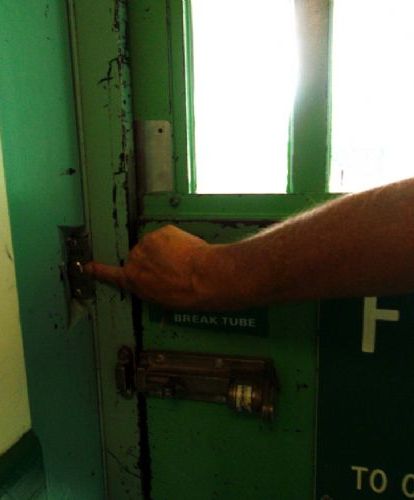I love it when people take action to rectify a code issue – especially when it’s a door problem. Two articles landed on my desk in the last few days about just that – citizens who saw a deficiency and didn’t let it drop until it got some attention. Both stories are from the UK and both involve high-rise apartment buildings – maybe Theodore Firedoor is helping to educate people about code-compliant fire doors.
The first is about known ‘substantial’ risks which had been cited on annual inspection reports for at least 5 years, including missing smokeseals and inadequate fire doors. When a resident who was formerly a fireman took the problem to the fire department, someone finally took notice. Here’s a short excerpt from the article (the full article is here):
A report by Urban Vision in 2008 recommended 18 fire safety measures deemed “necessary to bring the flats up to an acceptable standard”. These included “missing” smoke seals and strips on refuse hoppers to the rubbish chute… “In the event of a fire on the ground floor rubbish area this rubbish chute together with the lack of fire door would pump smoke directly into the escape routes…”
The actual rubbish chutes themselves were separated from people’s flats with a sliding door “that is clearly not a fire door”, while the actual doors to the individual flats were also inadequate… they “should be half hour rated fire doors and be fitted with automatic self closing devices and fitted with adequate hinges and smoke/intumescent seals, the letter plates in the doors should be fire rated with smoke/intumescent seals”.
There were lots of other things too, like the block’s recycling bins being too close to the building which, if set on fire, “would possibly escalate and quickly spread into the internal fabric the building”. And, if anyone did make it to the ground floor they would find “the means of opening the final exit door is inadequate and would be difficult to find and operate in the event of a fire.”
The other article involved the replacement of 700 fire doors, with doors that apartment residents felt were not code-compliant and did not provide adequate security (full article here).
Campaigner Graham Barrett, of Southern Court, Penkhull, said: “This is a scandal. Since we started this and complained about the quality of the fittings, the council has tried to say that we are totally wrong.
“They even told people they would be evicted if they refused to have these doors. But we said all along that they were insecure. Living in high rise flats you do get all sorts, we have had drug taking outside our doors and we want adequate security.”
Richard Snell, aged 67, also of Southern Court, said: “How can the council talk about upgrading ‘above and beyond’, when these doors are not proper fire doors, or even front doors. They are shoddy pieces of things for back offices.
“The council says mistakes have been made, but it hasn’t admitted what those mistakes are. I would like it to make the whole report public.”
Apartment residents have a vested interest in ensuring that their entry door is code-compliant and will withstand fire. In high-rise buildings, tenants are often instructed to “shelter in place” during a fire – remain in their apartment until it is safe to evacuate. Although the number of apartment fire fatalities has dropped over the last 30 years – possibly due to the increased use of sprinklers, statistics from the National Fire Protection Association (NFPA) report 95,500 apartment fires in the US in 2011, with 415 civilian deaths, 4,425 injuries, and $1,168,000,000 in property damage. With the frequency of apartment fires it’s critical that fire doors and other components of the fire protection system are inspected annually, and any deficiencies rectified “without delay” as required by NFPA 80.
Photos: Salford Star
You need to login or register to bookmark/favorite this content.








Leave A Comment